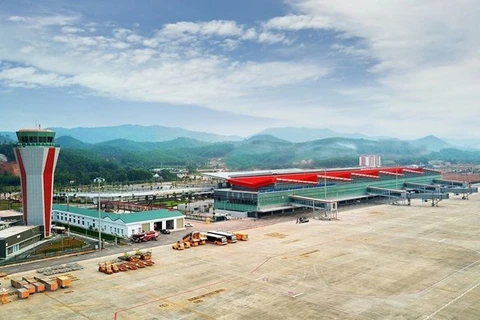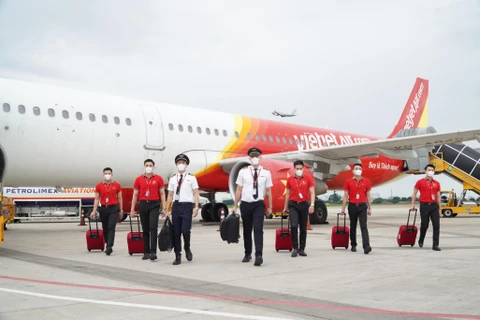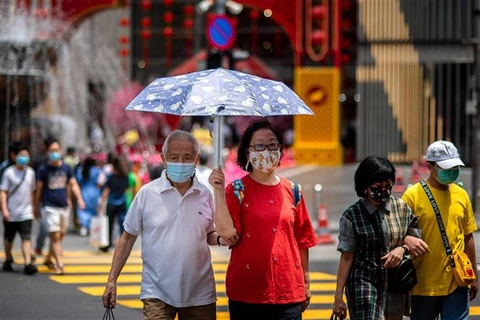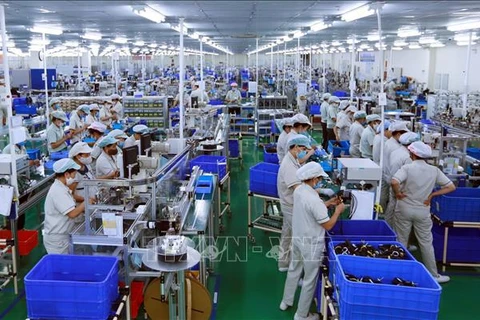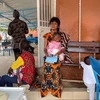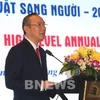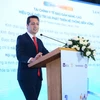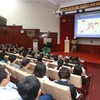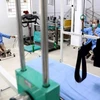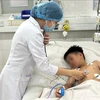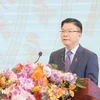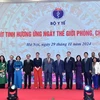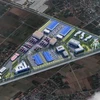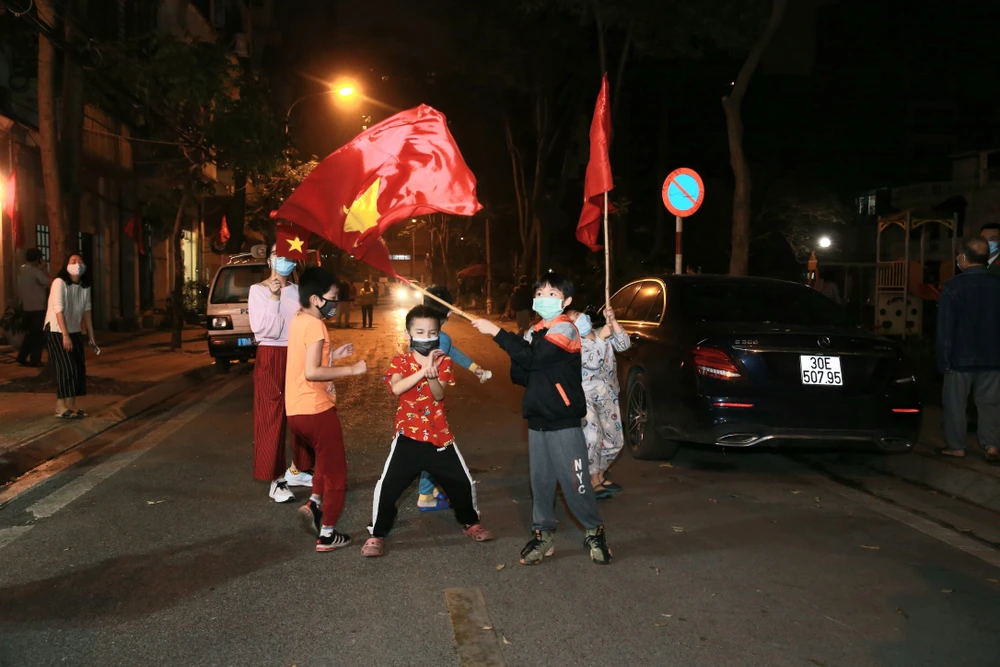
Hanoi (VNA) - The first cases of COVID-19 were discovered on December 29, 2019 in Wuhan, China. Later, on March 31, 2020, the World Health Organisation (WHO) declared COVID-19 a global pandemic.
By now, over 120 million COVID-19 cases and more than 2.6 million fatalities have been recorded in 221 countries and territories around the world. The pandemic has pushed the global economy into serious recession.
Vietnam has so far gone through three stages of infections, with the first from January 23, 2020, the second from late July 2020, and the third from January 25, 2021.
By now, over 120 million COVID-19 cases and more than 2.6 million fatalities have been recorded in 221 countries and territories around the world. The pandemic has pushed the global economy into serious recession.
Vietnam has so far gone through three stages of infections, with the first from January 23, 2020, the second from late July 2020, and the third from January 25, 2021.
The Vietnamese Government has issued a number of policies to help businesses and people gradually overcome the difficulties brought about by the pandemic. The country has been a highlight in fulfilling the twin goals of fighting the pandemic and restoring socio-economic development.
In the first stage, the Government directed the adoption of early and drastic measures at an earlier time and stronger level than those recommended by the WHO. From the outset, it deployed the military force to the task of monitoring concentrated quarantining and controlling cross-border movement in border areas. Vietnam also conducted flights bringing citizens home and foreign investors, experts, and skilled workers to the country for employment.
In the first stage, the Government directed the adoption of early and drastic measures at an earlier time and stronger level than those recommended by the WHO. From the outset, it deployed the military force to the task of monitoring concentrated quarantining and controlling cross-border movement in border areas. Vietnam also conducted flights bringing citizens home and foreign investors, experts, and skilled workers to the country for employment.
In the second stage, response measures were taken quickly, drastically, and synchronously. All localities rebooted prevention and control systems so that pandemic “hotspots” were quickly isolated and wiped out.
With the spread of new COVID-19 variants in the third stage, the Ministry of Health led the effective carrying out of rapid tracing and isolation, collecting samples for testing on a large scale and narrowing the scale of lockdown to mitigate impacts on social and economic life.
The pandemic has so far been brought under control in the country.
With the motto “Fighting the pandemic like fighting the enemy”, Vietnam has worked closely with international organisations and countries worldwide to share information and identify strong but rational measures, which were welcomed by the international community.
As of late March 23, the country had reported 2,576 cases of infection, 1,601 of which were locally transmitted. Some 2,246 have recovered while 35 have died.
Thanks to timely and sound direction from the Government, the National Steering Committee for COVID-19 Prevention and Control, the Ministry of Health, other ministries, agencies, and localities, together with public unity, Vietnam successfully controlled its COVID-19 outbreaks at a relatively low cost.
With the spread of new COVID-19 variants in the third stage, the Ministry of Health led the effective carrying out of rapid tracing and isolation, collecting samples for testing on a large scale and narrowing the scale of lockdown to mitigate impacts on social and economic life.
The pandemic has so far been brought under control in the country.
With the motto “Fighting the pandemic like fighting the enemy”, Vietnam has worked closely with international organisations and countries worldwide to share information and identify strong but rational measures, which were welcomed by the international community.
As of late March 23, the country had reported 2,576 cases of infection, 1,601 of which were locally transmitted. Some 2,246 have recovered while 35 have died.
Thanks to timely and sound direction from the Government, the National Steering Committee for COVID-19 Prevention and Control, the Ministry of Health, other ministries, agencies, and localities, together with public unity, Vietnam successfully controlled its COVID-19 outbreaks at a relatively low cost.
Amid new developments of the pandemic, the National Steering Committee and the Health Ministry have issued new strategies.
In compliance with the Government resolution on the purchase and use of COVID-19 vaccines, the Health Ministry quickly bought vaccines and provided vaccinations to citizens.
Apart from imported vaccines, the Health Ministry is also stepping up the research and development of home-made vaccines. Nanocovax developed by the Nanogen company was put into the second stage of clinical human trials on February 26, while human trials of Covivac from the Institute of Vaccines and Medical Biologicals (IVAC) began on March 15. Made-in-Vietnam vaccines are scheduled to come into use next year.
In compliance with the Government resolution on the purchase and use of COVID-19 vaccines, the Health Ministry quickly bought vaccines and provided vaccinations to citizens.
Apart from imported vaccines, the Health Ministry is also stepping up the research and development of home-made vaccines. Nanocovax developed by the Nanogen company was put into the second stage of clinical human trials on February 26, while human trials of Covivac from the Institute of Vaccines and Medical Biologicals (IVAC) began on March 15. Made-in-Vietnam vaccines are scheduled to come into use next year.
Ministries, agencies, and localities are continuing to strengthen leadership and raising a sense of responsibility among heads of units in the effort. Top priority is given to pandemic control, but thorough consideration of prevention and control measures must be made to mitigate the socio-economic and human impact.
The essential but most popular and easiest measures continue to be undertaken to prevent infections in the community while strict monitoring is conducted to ensure the safety of high-risk groups in the community.

Deputy Prime Minister Vu Duc Dam chairs a meeting of National Steering Committee for COVID-19 Prevention and Control. (Photo: VNA)
Ministries, agencies, and localities are also working to prevent disruptions to economic activities, especially in affected localities, facilitating international trade in the “new normal”, attracting investment from major partners, and creating the conditions to welcome investors, experts, and corporate executives to Vietnam for diplomatic and official purposes./.
VNA









